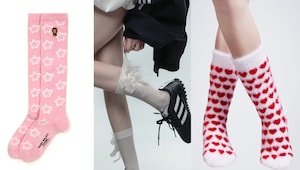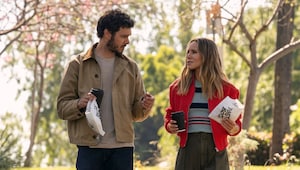How to Start Your Own Online Business?
Six successful women entrepreneurs spill the beans on how they built their empires from scratch. Here’s a handy guide into your very own e-shop.

1. BINDU SHARMA AND KAVITA JOSHI RAI
Co-Founders, MSM Box

“MSM Box began as a blog on beauty, fashion, and lifestyle. We created these beauty boxes when we realised there was a gap in the market. Our readers asked us so many questions on what skincare, haircare, and brands to use that we decided to use that information to create a box with different products, to help them with their beauty issues. That’s the biggest step to launching your own online business: find a gap in the market and understand your own expertise, then marry the two. It’s definitely easier to start off a store on a social media portal first, but having said that, very few people would buy from a brand that doesn’t have a website. But in terms of marketing, it’s digital all the way. We keep about 50 to 60 percent aside from our budgets for digital marketing— it’s that important. It’s quite easy once you know who to talk to, and the demographic to go after. But the secret lies in understanding your audience first, and making sure that your product fulfills their needs. We prefer using YouTube versus Instagram, as it helps us explain our products better, and reach our audience in a more personal manner.”
2. CHARUTA ARVIND YADAV
Founder and Creative Head, Moda Yalda
“I combined my love for art and fashion and created Moda Yalda. Each of my designs are hand-painted and made to order, so it takes ages, but I love what I do. Since they’re on the more expensive side, I have a select clientele who really understand my work. I only have an Instagram store at the moment, and I rely 100 percent on social media marketing. My Insta page gets more traction than you’d think. I find that you need to post eye-catching content—often—to get people to notice you. I start with creating some social media noise about my collection, sort of like a sneak-peak or Coming Soon’ post. Then I launch one product at a time, along with a little description of the material and the inspiration behind the product. I find that it keeps people engaged, and they’re curious to see the final product. When you’re a small start-up, every order helps a tonne, and through my creative social media posts, I find that my customer base keeps growing every day. Currently, I’m working on over 12 orders, and I get about 20 to 30 each month. I don’t really have a team at this point, so I do all things myself, including measuring sales and keeping an account of my products. But I’m learning a lot on the job, like how price-sensitive my customers are—because my target audience is mostly students, they prefer products that are affordable. I do think it’s easier to start off on a social media platform because you can really get a clear picture of who your audience is, what products they like, what price suits them best, which are your best-sellers, and how people are reacting to your designs. It’s easier to shift to a website once you’ve gained a significant number of followers.”
3. ANGEL BEDI
Founder, The Filmy Owl
“The Filmy Owl was an unplanned decision that I started on a whim. I knew I was incapable of a nine-to-five job, so I fiddled around with a few options until I launched this kitschy brand. There’s no secret to starting your own business; just know the basics: come up with a good idea, create something cool, hire a web designer, and just go with it! There’s a lot of detail and intricacy that you have to get into once you lay it all down on paper, but don’t be afraid of failure. I failed twice before I got lucky on my third try. I met people who introduced me to Shopify.in, which taught me so much about operating a website and did everything for me. It helped with the algorithms, tells me how many people are live on my website, what time is best to push a post on social media, and much more. Then I went about marketing my products—I started by uploading quirky videos on my Instagram, asking for
suggestions so my followers could get involved in the creative process. I even asked other ‘influencer friends’ to support me with promotional posts for The Filmy Owl, and that helped a lot. Which brings me to my next point—networking is everything! My family and friends helped me grow my brand, but only up to a point. You have to befriend bigger Instagram influencers, and even send them gift boxes to attract more traction to your page. With my customer base growing super-fast, I find that the MailChimp app helps me keep track of it all. These are just a few things I’ve learnt while starting up The Filmy Owl, but my main tip is this: keep your foundation strong.”
4. SALONI SHAH AND SHWETA RAMAN
Co-Founders, The Style Salad
“We curate gift boxes around themes to make gifting easier, while bringing different designers and brands under one roof. For example, in our Coffee Box, we have everything a coffee lover might need—coffee scrubs, body washes, mugs, and more. We now also have a Toss Up Your Own section, where customers can customise boxes. We ensure there’s always something new on the website to enable more customer engagement. SEO plays a
huge role in getting your brand out there, and we focus on brand-specific key words like gifting, curated gifts, boxes, etc. A good marketing budget for social media could be anywhere between Rs. 50,000 to Rs. 70,000, for a start-up. The Style Salad was completely self-funded, and we began with about Rs.10 lakh which was sufficient to get us started. Out of that, one should ideally set aside Rs. 3 lakh for a decent website with a focus on a good user interface, as your main aim is to run an e-commerce business. It acts as the first impression of your brand, and it’s the only way that the customer can really experience and get to know your products. The rest of it can go into marketing and inventory management. Currently, we’re looking at setting up an inventory software to help us out with our growing business.”
5. SANAH PAHWA
Creative Director, The Pillow Company
“When we started in 2017, not many people were doing online home furnishing. The Pillow Company is an endeavour to offer a boutique shopping experience. We make a trending portfolio and mood board each month to come up with newer, more creative designs. That’s key in any business, keeping the products original and making sure there’s always something new on your website. A lot of younger people are starting with social media
stores, but I think that’s temporary—it’s easier for them to get lost in the crowd. Having a website is safer and more structured. For a good website, an easy-to-use user interface is extremely important. It should be shopper-friendly to help your clients find what they want in a jiffy. Considering that we only started in 2017, we’ve grown faster than expected. People are more hesitant to order furniture online, but that’s where brand positioning is crucial, so we used the sponsored posts tool on Facebook and Instagram to push our brand. We spend about Rs. 5 lakh on social media posts alone, that’s how important it is. Other than that, we find that Google Display and Google Analytics help us measure our performance, so we always have an eye on our goals.
6. KUHU KOCHAR AND TEJASWI CHANDELA
Co-Founders, All Things Chocolates
“With All Things Chocolates, we wanted to transport people to different parts of the world, and that’s what inspired us to start a range of city-specific chocolates. People are willing to spend a decent amount on good quality chocolate—think Rs. 250 to Rs. 400 for 100 grams. In today’s world, starting a business isn’t so hard, once you’ve found your passion. And there’s help and tools available. If you don’t know how to code, hire a web designer or an agency to do it for you. If you’re on a budget, look at Squarespace or Wordpress, they’re fairly easy to navigate. We had a host of technical tools to help us out—Hootsuit, a social media marketing and management dashboard, is a blessing! Social media is a great place to build a brand presence, but we would recommend launching your own online store alongside it. It’s really important to post aesthetically pleasing pictures on
one’s Instagram page, that’s what attracts people. PicMonkey is a great web-based photo editing tool to make quick and professional looking social media posts. When you’re starting out, check out Social Media Examiner, a website that’s a brilliant guide to solve social media woes. Also, when it comes to packaging, many people prefer the minimal route, but we find that that’s being replaced by a kitsch aesthetic. We collaborate with designers and photographers to create wrappers that stand out, and also cover more ground while reaching our target audience.”
more from Life

How ‘The Housemaid’ movie stacks up to the book

Emily is heading back to Paris for season six but is this where we say goodbye?

Keeping the camera on or off: What’s the right way to go about professional meetings?

Four celeb-inspired salad recipes are what January lunches should be made of

Fun cosy socks you should invest in while winter is still around

Every couple should fight (Taylor and Travis included)

Choremance is the new dating trend making everyday errands feel romantic

Why going offline is suddenly Gen Z’s favourite flex

It's the Year of the Horse and here's what it means for you

If a man wears this, date him….
